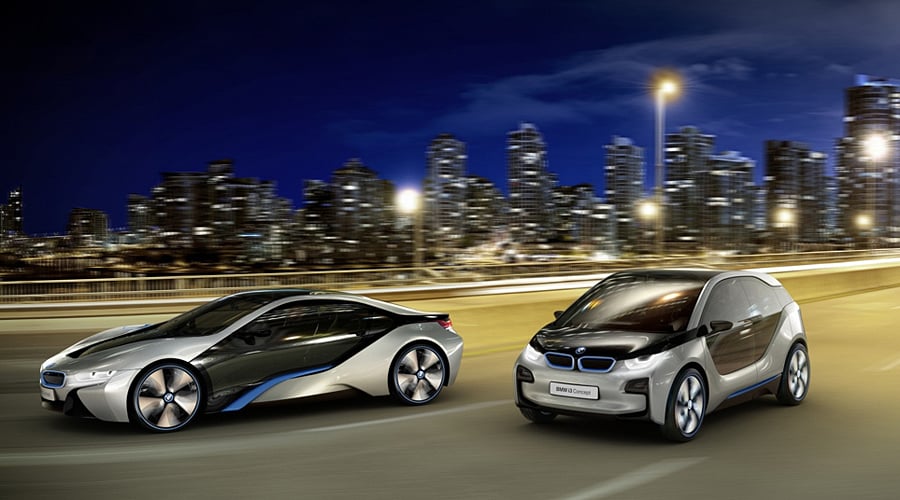
BMW has ushered in its new ‘i’ sub-brand by revealing two alternative-drive cars; the i3 supermini and the i8 sports car, the latter of which has the performance of an M3 yet an economy figure of up to 104mpg.
This isn’t the first time we’ve come across either of the cars; the i3 is the result of BMW’s much talked about Megacity project, while the i8 was previewed by the Vision EfficientDynamics concept at the 2009 Frankfurt Motor Show. BMW’s claims about the versatility of the i8 may seem ambitious (especially combined with the four-seat layout and 200-litre boot capacity), but the boffins from Bavaria are working hard to ensure the first model rolls off the production line before the end of 2014.
The i8 is a four-wheel-drive plug-in hybrid coupé, using an electric motor to drive the front wheels and a 1.5-litre, three-cylinder petrol engine delivering 217bhp to the rear wheels. The result is a top speed of 155mph, a 0-62mph sprint of 4.6 seconds (0.2 seconds quicker than the current V8-engined M3) and fuel economy of up to 104mpg. BMW claims that even when ‘driven hard’, the i8 will return 40-54mpg.
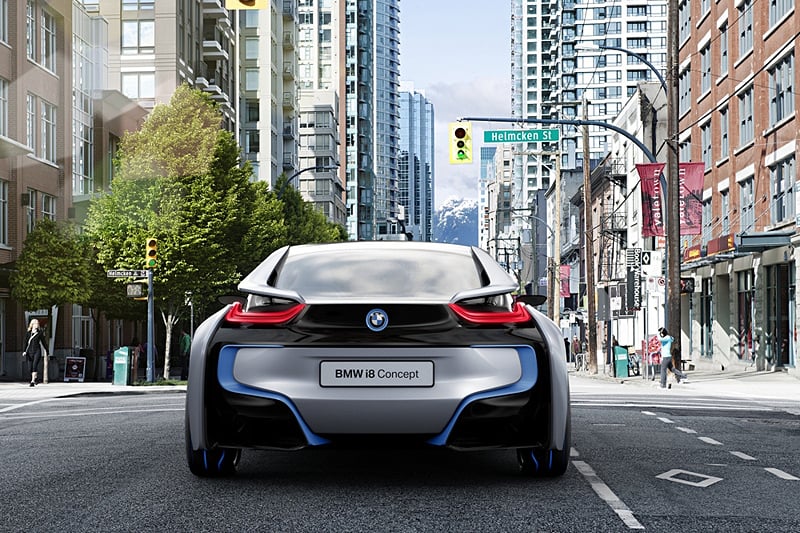
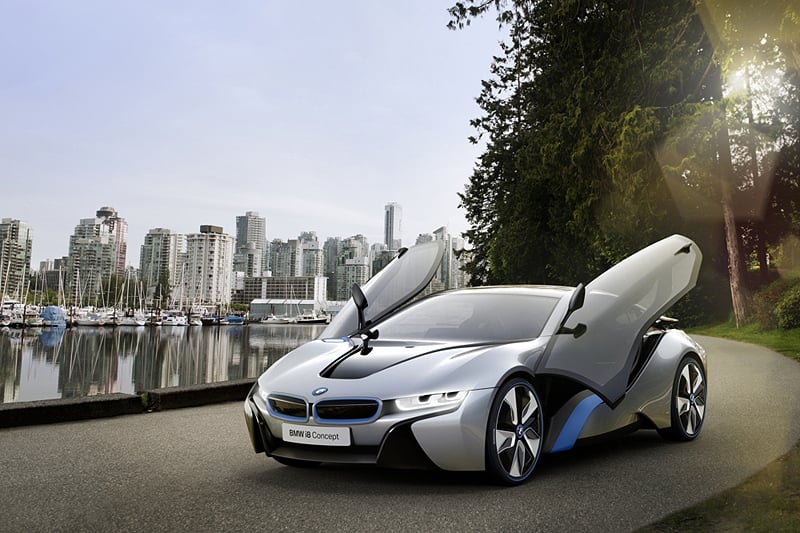
The i8 will be able to run for 20 miles on electric energy only, which will thereafter be supplemented by power generated by the range-extending combustion engine and energy recuperation system, while the battery can be charged from empty to full in 105 minutes through a 220V power supply. A low weight is crucial for the economy and performance of the car, and the carbonfibre-reinforced plastic (CFRP) passenger cell integrated into the aluminium-intensive chassis contribute to a kerb weight of just 1480kg — which is more than 80kg lighter than the Nissan Leaf. Dimensions of the i8 are similar to those of the current 3-series coupé.
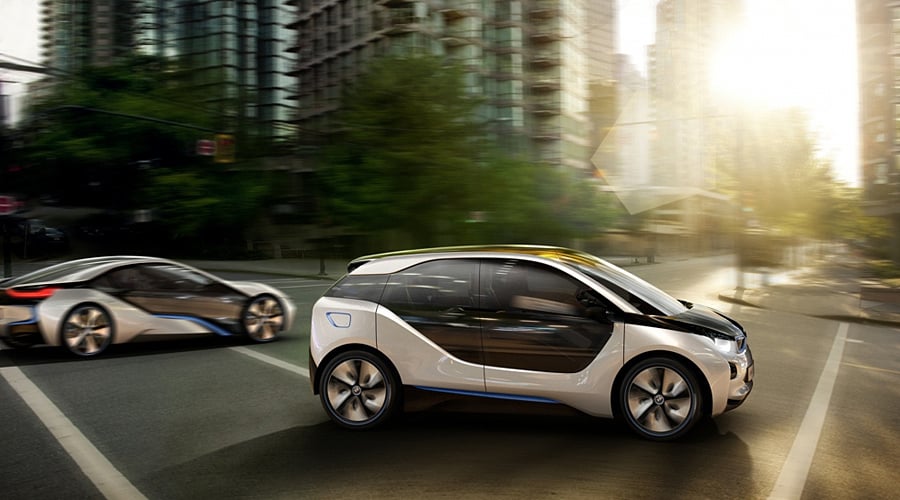
The smaller ‘i’ model is a plug-in electric city car, with the option of a range-extending petrol engine for those with the ‘range anxiety’ commonly associated with ownership of an all-electric vehicle. Predicted to go on sale in 2013, the i3 shares a similar CFRP and aluminium construction to its sportier sibling, giving a kerb weight of 1250kg - 100kg more than the current Mini, which is attributed to the large battery required for an electric-only vehicle. However, the liquid-cooled lithium-ion battery is mounted underneath the floor, which gives the i3 a lower centre of gravity than the new 1-series.
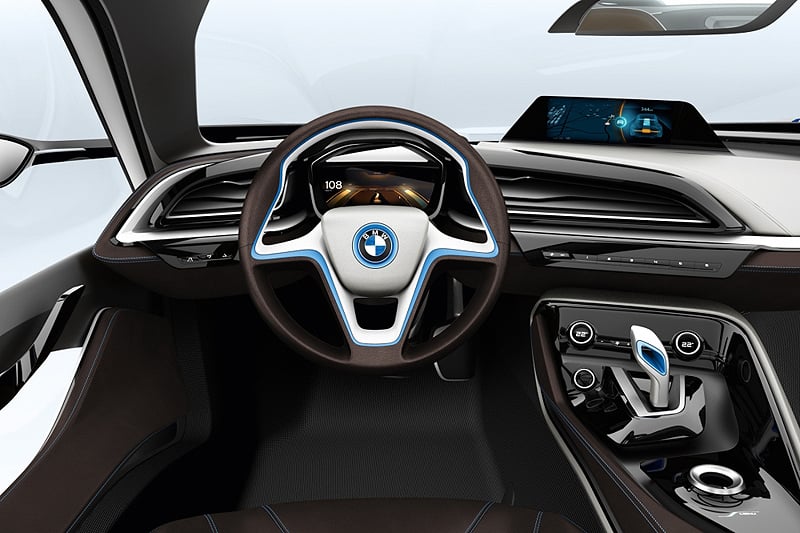
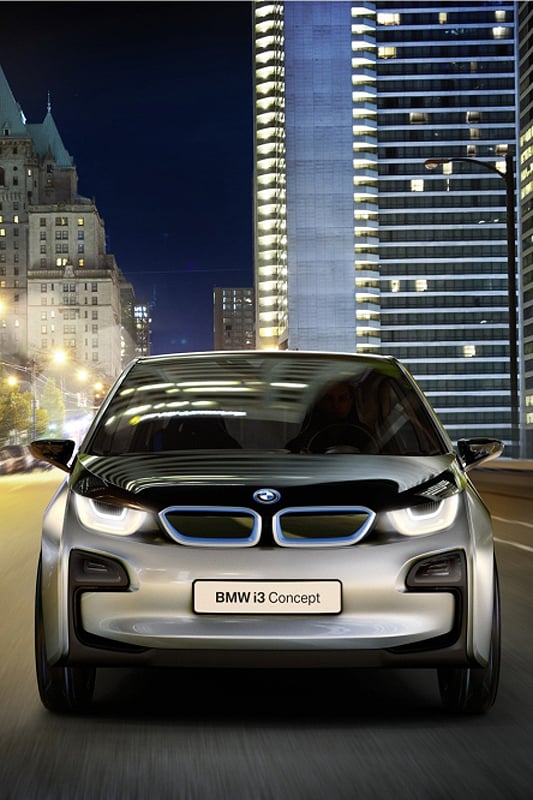
The electric motor sends 168bhp to the rear wheels through a single-speed transmission, and has a similar 0-62mph acceleration time (7.9 seconds) to the BMW 118d. Maximum speed is 93mph and the range is between 80-100 miles, which BMW says is sufficient for 90% of journeys according to field tests in electric Mini prototypes. In terms of size, the car’s dimensions are between those of the Mini and the 1-series, and inside there’s space for 4 adults and 200-litres' worth of luggage. A handy traffic-jam assistance function will be pioneered on the i3, which takes control of the vehicle’s acceleration, braking and steering in stop-start traffic up to 25mph, provided the driver keeps one hand on the wheel.
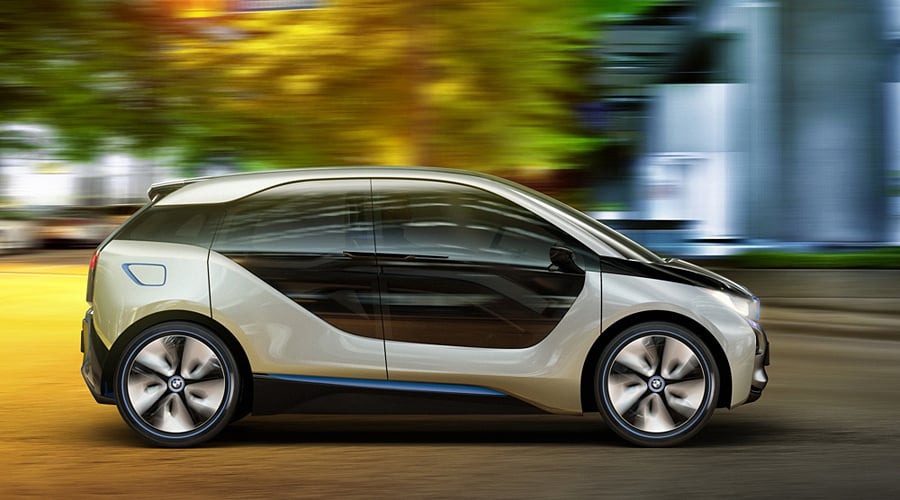
Both cars will be formally revealed to the public at this year’s Frankfurt Motor Show.
Text: Joe Breeze
Photos: BMW
ClassicInside - The Classic Driver Newsletter
Free Subscription!







